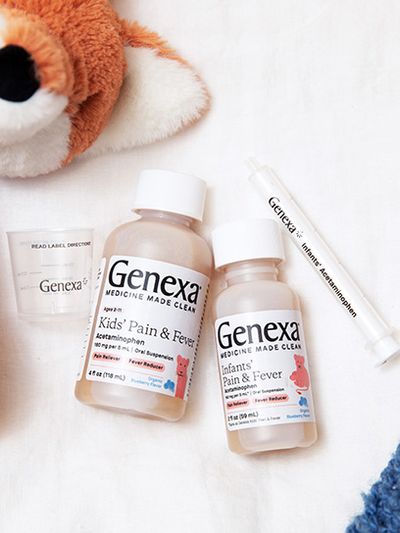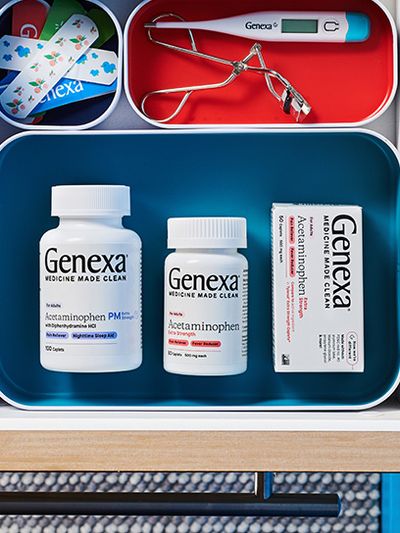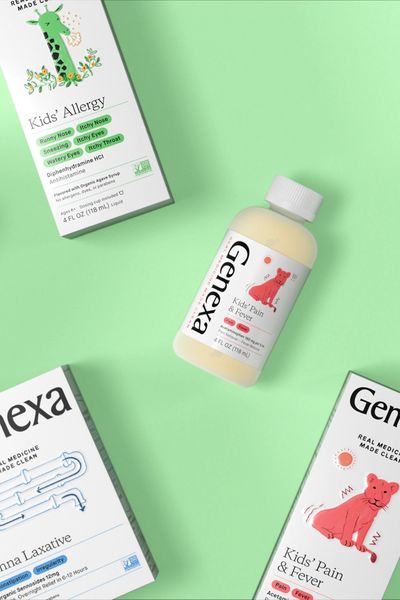Feel Confident Giving Your Child A Fever Reducer
Children's Fever Reducer: Ingredients and Information
Table of contents:
When your child comes down with a cold, infection, or other illness, they may spike a fever. While low grade fevers in children are typically not dangerous, they may leave your kiddo feeling a little bit uncomfortable and ill, and you will probably be on the search for the best remedy that will work to reduce the fever.
There are plenty of commercially available products aimed at reducing fever in children, but not all of these products were created equal. Some are full of artificial inactive ingredients that you do not need or want to give to your children, and others may not be effective as they promise to be.
So, what is in a children’s fever reducer, what other information do you need to know, and what children’s fever reducer is sure to have your needs covered? This is your guide to reducing your little one’s fever safely and effectively.
Reading The Drug Facts Label: Ingredients And Proper Usage
With any fever reducer or other medicine, the first thing you need to know is that the Drug Facts Label likely contains much of the information that you are looking for.
The Drug Facts Label contains the following information:
- Active Ingredients: The Drug Facts Label lists any active ingredients in the medicine as well as what those ingredients are used for. For example, in a fever reducer, the active ingredient will likely be acetaminophen or ibuprofen, and the purpose is to reduce a fever. If the purpose of the ingredient is not listed next to the name of the ingredient itself, you will likely be able to find this information underneath the “Uses” section of the label.
- Uses: The section of the Drug Facts Label that is called “Uses” tells you what the medicine is meant to treat. For a fever reducer, the uses section will tell you that the medicine is intended to help treat a fever.
- Warnings: There is also a “Warnings” section on the label which tells you about certain circumstances under which it may be unsafe to use the medicine in question, such as drug interactions or certain health conditions that can lead to adverse reactions. If your child is currently taking any of the medications listed in this section, or if your child has certain health conditions that are listed in this section, you should consult your pediatrician before you give your child the medicine in question.
- Directions: The Drug Facts Label also includes instructions regarding proper usage of the medicine, such as how much medicine you should give your child (i.e., the “dose”), how often you should give medicine to your child, and how long the medicine should be used for. Oftentimes, the proper dose will depend on your child’s age or weight, and there may be a chart to help you figure out how much medicine your child needs. If anything is unclear after reading this section, you should consult your pediatrician for further guidance.
- Inactive ingredients: The Drug Facts Label on a bottle of medicine will also tell you what inactive ingredients are included in the formula. Inactive ingredients do not help the medicine do its job, but they may help with flavor, color, or texture. Some artificial inactive ingredients may cause allergic reactions or other adverse effects, so you should read this section carefully if you know your child is allergic to certain ingredients.
Common Fever Reducers: Acetaminophen Versus Ibuprofen
Acetaminophen and ibuprofen are the two most commonly used active ingredients in fever reducing medicines, and it can be helpful to know the difference so that you can make a more informed decision about which type of medicine may be the better choice for your child.
Acetaminophen is often thought of as an anti-inflammatory drug, but this is not actually the case. Instead, acetaminophen acts as a pain reliever and fever reducing agent. On the other hand, ibuprofen is an anti-inflammatory drug, meaning that it can work to reduce inflammation and swelling in the body. That said, it can also be used as a fever reducer.
Aside from these minor differences, it is important to note that children under the age of 6 months should only be given acetaminophen to reduce a fever, not ibuprofen. Thus, acetaminophen may pose fewer risks to your child’s wellbeing and safety.
Children’s fever reducers often contain acetaminophen as the active ingredient. Because the active ingredient is acetaminophen, these types of fever reducers are generally safe for use by most children, but it is still important to consult your pediatrician before using it to treat any child under 2 years of age.
You should also look for kids’ medicine that is free of artificial inactive ingredients to reduce the risk of adverse effects caused by allergies and sensitivities to these synthetic ingredients. Instead, look for medicine formulated with natural sweeteners like organic agave syrup, blueberries, and citrus extract.
How To Ease Your Child’s Fever Alongside Medication
Medication is not the only way that you can help reduce your child’s fever and any associated discomfort. In fact, certain home remedies may work well alongside a fever reducer in order to help your little one feel like themselves again.
Once you give your child a fever reducer, you can also try the following things to help ease their discomfort:
- Make sure the room is a comfortable temperature and is not too warm
- Dress your child in light and breezy clothing
- Help your child drink plenty of fluids to make sure they stay hydrated
- Keep your child from overexerting themselves while their body is healing
- Check in with your pediatrician if there is anything you are concerned or uncertain about
If you give your child the appropriate dose of a fever reducer and your child’s symptoms do not respond, this is a sign that you should get in touch with your doctor for professional guidance about next steps. Additionally, if your child’s symptoms do not improve within a few days, you should talk to your pediatrician to make sure nothing more serious is wrong, or to get advice about what to do next in order to help your child feel better.
It is always a good idea to consult your doctor before giving your child any kind of medicine for an illness that has not been diagnosed by a medical professional, because your doctor can help make sure that the medicine you are using is appropriate for your little one’s needs. Your doctor can also steer you in the right direction if another form of medicine is necessary, or if the problem is something else entirely. When in doubt, consult your pediatrician.
Children’s fever reducers are largely safe, but it never hurts to play it even safer and get a professional opinion before proceeding, especially if you are trying out a new medicine that you have not given to your child before.
The Bottom Line
When it comes to children’s fever reducing medicines, they often include active ingredients such as acetaminophen or ibuprofen. While ibuprofen is an anti-inflammatory drug, acetaminophen works to relieve pain and reduce a fever. Ibuprofen, too, may be used to help reduce a fever.
Acetaminophen is often preferred over ibuprofen because it is safe for use in children under the age of 6 months, while ibuprofen is not recommended for use in children this young.
With any form of medicine, it is important to look at the Drug Facts Label for necessary information regarding ingredients, proper usage, and any warnings associated with the medicine. Certain medicines may not be recommended for use by people with certain health conditions, and some medicines can have dangerous drug interactions. Reading the label will alert you to any of these, and will also inform you about inactive ingredients.






